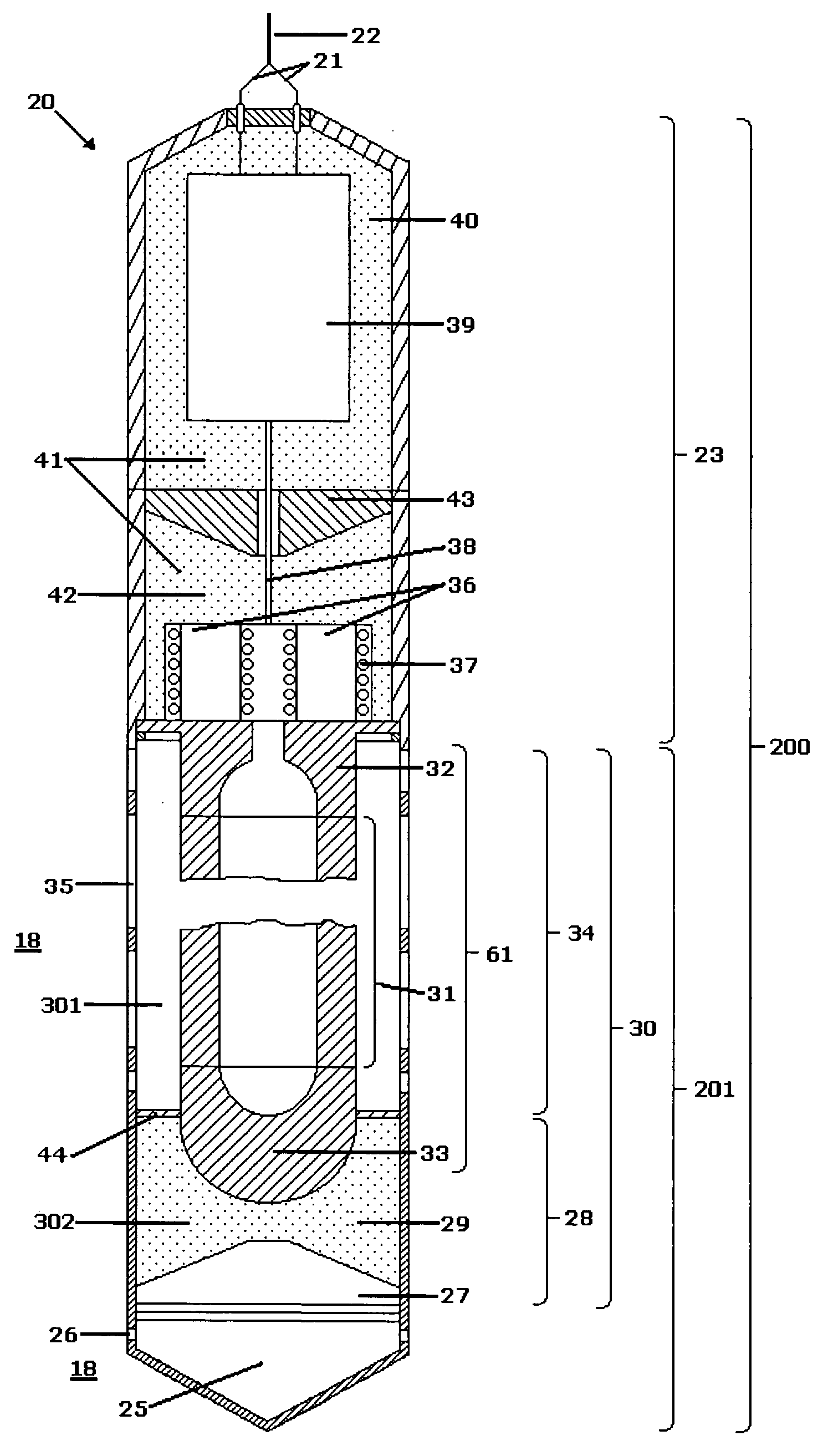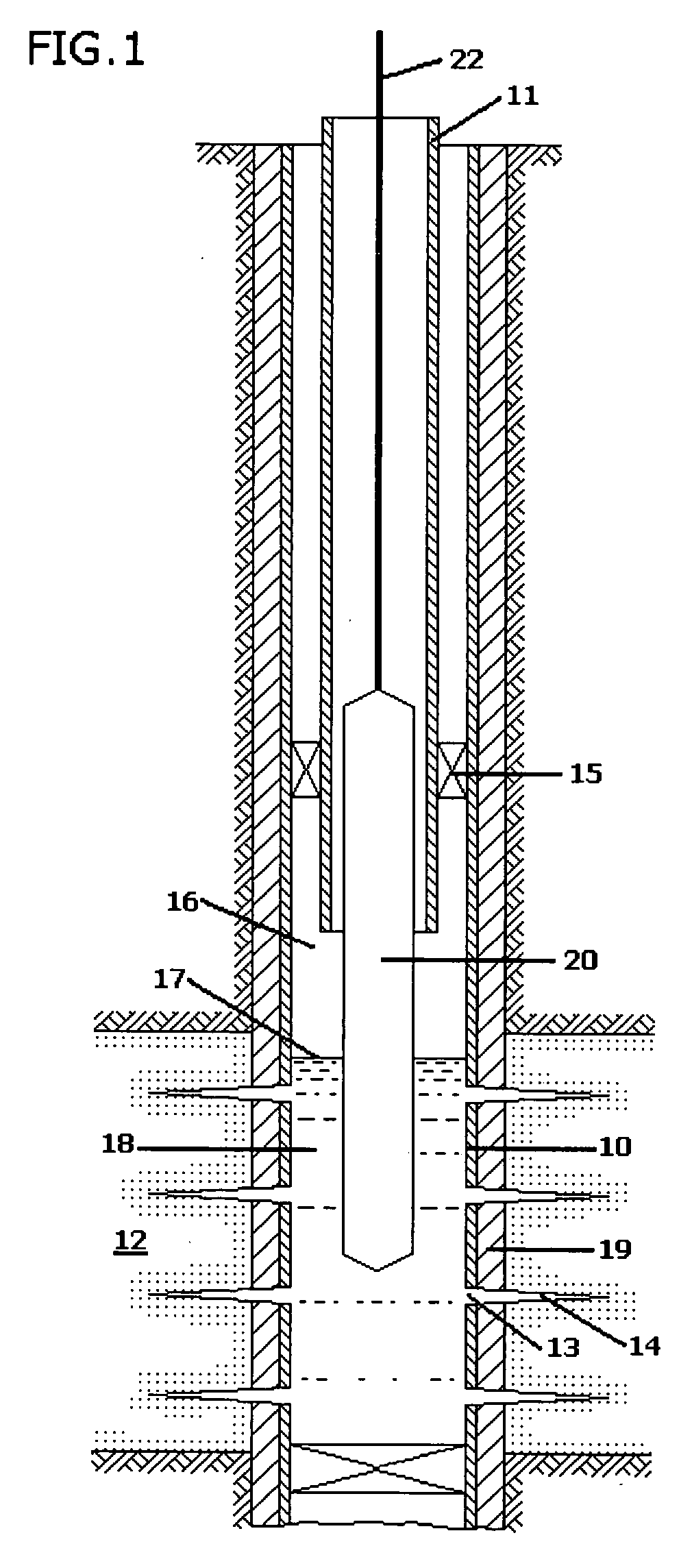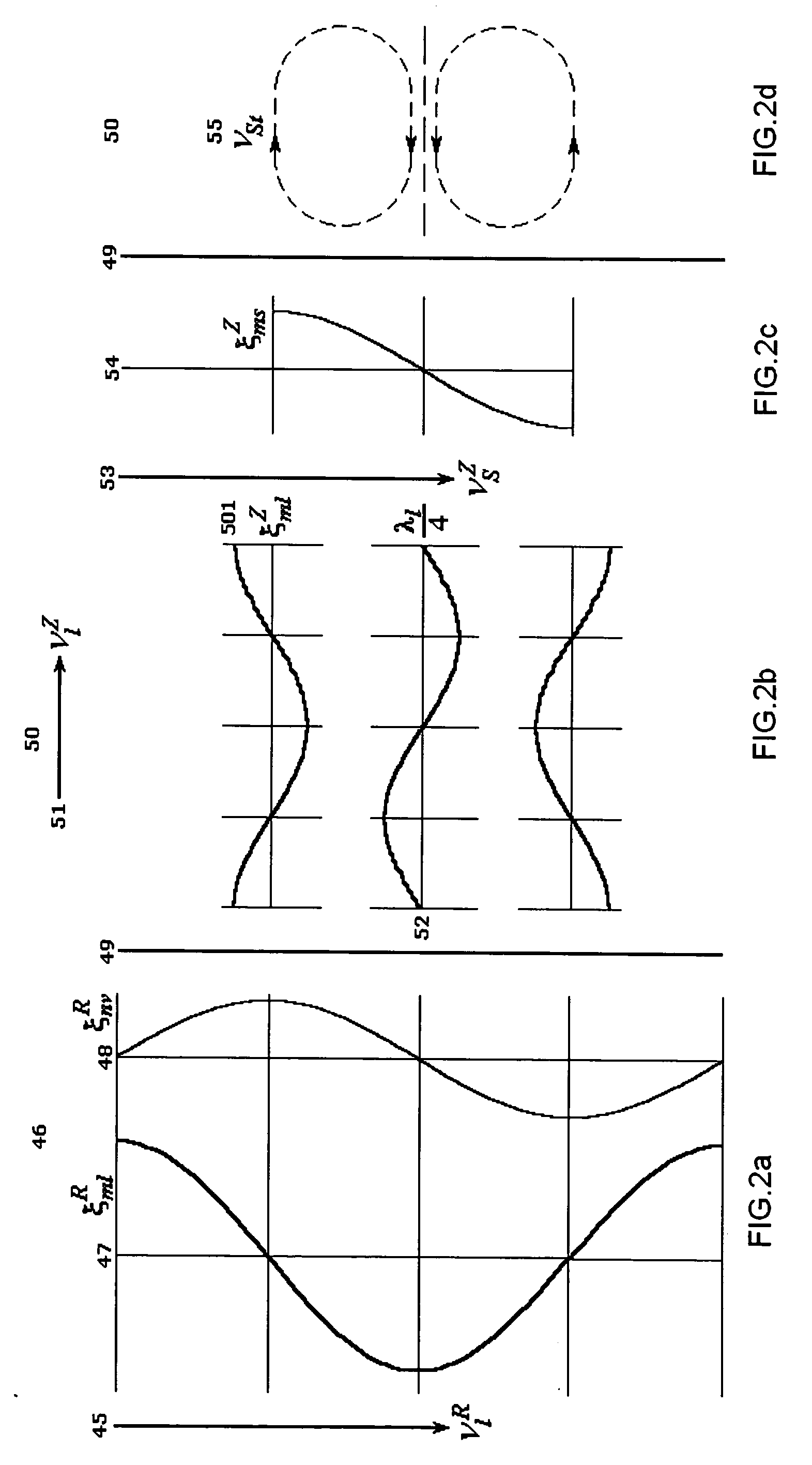Electroacoustic method and device for stimulation of mass transfer processes for enhanced well recovery
a technology of electroacoustic stimulation and mass transfer, applied in the oil industry, can solve the problems of obstructing the space in the pore, and reducing the production rate of fluids,
- Summary
- Abstract
- Description
- Claims
- Application Information
AI Technical Summary
Benefits of technology
Problems solved by technology
Method used
Image
Examples
Embodiment Construction
[0050] In accordance with the present disclosure and with the purpose of increasing permeability of a well bore region of oil, gas and / or water wells, a method and device, are disclosed for stimulating said well bore region with mechanical vibrations, with an end to promoting formation of shear vibrations in an extraction zone due to the displacement of phase of mechanical vibrations produced along an axis of the well, achieving alternately tension and pressure forces due to the superposition of longitudinal and shear waves, and stimulating in this way the occurrences of mass transference processes within the well.
[0051] This is illustrated by the diagrams presented in FIG. 2, where the vector of oscillating velocity VRI (45) of longitudinal vibrations that propagate in a radiator (46), is directed along the axis of the radiator, while the amplitude distribution of vibratory displacements ξRmI (47) of longitudinal vibrations also propagate along the radiator. In lieu of this, as a ...
PUM
 Login to View More
Login to View More Abstract
Description
Claims
Application Information
 Login to View More
Login to View More - R&D
- Intellectual Property
- Life Sciences
- Materials
- Tech Scout
- Unparalleled Data Quality
- Higher Quality Content
- 60% Fewer Hallucinations
Browse by: Latest US Patents, China's latest patents, Technical Efficacy Thesaurus, Application Domain, Technology Topic, Popular Technical Reports.
© 2025 PatSnap. All rights reserved.Legal|Privacy policy|Modern Slavery Act Transparency Statement|Sitemap|About US| Contact US: help@patsnap.com



